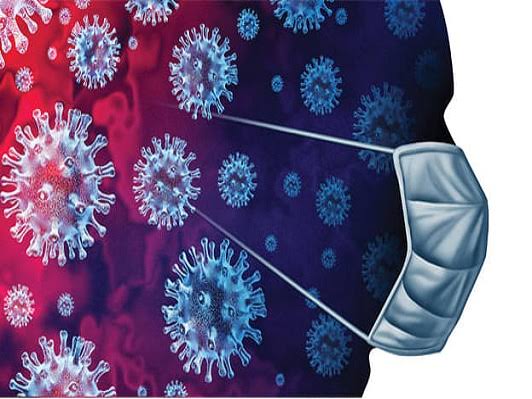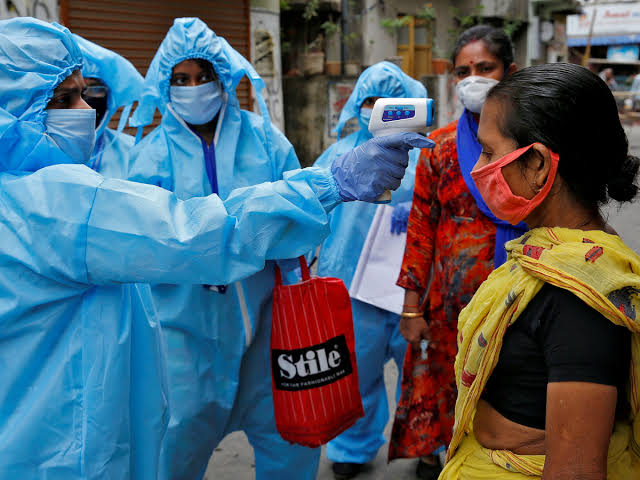A micro pathogen, Coronavirus in general and Covid-19 in particular, has forced the giant world into unknown deluge. Its origin is China or not is totally a matter of political deliberations but it’s true that China has turned this micro-organism outbreak into pandemic. By now, the cruel Covid-19 has crossed the territorial demarcations of more than 200 countries, infecting more than 34 lakh people and unfortunately cost lives of more than 2.43 lakh.
The Covid-19 pandemic has steeply reduced the working spectrum from solar-space to home space. The global economic hyper competitive engagements have been significantly contracted and global co-operative governance players have expanded their roles to cope such a cunning and invisible enemy. Interestingly, social distancing is the mostly uttered word, but the world is closer and more connected than even before to globally manage the medical disaster and the environment is far clearer than ever before.
India is more prone to such pandemic because of its widely diversified geo-pol demography, low health-care awareness, undermined medical research and development initiatives, heavy out-of-pocket expenditure, lack of health-care insurance coverage, lack of co-ordination among administrative agencies, deficient health budget, significant number of vulnerable, and handicapped public healthcare infrastructure. As reference, India has only 1 lakh well-equipped ICU, 0.5 bed per 1000 people and a disheartening ratio of 1:1445 between doctors and patients. These figures possess a systemic threat to the nation.
In last 3 months, India has shown exemplary response to corona. It was the result of decisive leadership, pro-active harsh sanctions, effective channelizing of related information, judicious fund re-allocation, integrated efforts of significant agencies. India has taken slew of measures to break the brutal spreading chain of corona and followed the strategy of trace, test, and treat. A comprehensive, co-ordinated, and continuous efforts have somehow managed to reduce the (potential) losses from this deadly menace to minimum. In fact, India is performing far better than most developed nations, especially USA, and other European nations. Experts are analysing and grinding the potential challenges post corona, its multilateral impact, and its proper recovery measures. But its equally pertinent to analyse the current contamination and preventive/ curative actions, central bank’s action-plan, role of media partners, and the unsung warriors.

India: A quasi-federal country
The collapsing health-care scenario of countries like US and Italy gave a bitter experience to other national leaders. Such deadly havoc was the result of (in)disciplined ignorance and authoritative attitude of the chairs. To give proper heed to the threat, union and state governments {in rare co-ordination} have taken multi-layered steps, predominantly by the centre, to fight corona with fractured health-care infrastructure.
- The proactive call for restrictions on international travel, consecutive blanket lockdown, improvised upgradation of public health system, declaring covid- 19 as disaster, constitution of high-level task force on coronavirus vaccine and drug testing, massive sanitation campaign etc. have reduced the potential chances of community transmission. Such national lockdown created ruckus in the minds of people, but it was not an option rather a necessity.
- In days, union government announced PM Garib Kalyan Yojna relief
package of Rs 1.70 lakh crore for the vulnerable. - Union in co-ordination with states is fusing additional funds to provide essential commodities to the needy on one hand, and equipping health sector for timely tracing and treatment of the pathogen carriers on the other.
- Further, to meet the fountain financial requirements, centre suspended MPLAD for subsequent 2 years, $1.5 billion loan from Asian Development Bank (ADB), $1 billion emergency assistance from New Development Bank (NDB), $1 billion emergency assistance from World Bank and raised internal funds through newly opened PM Cares Account.
- Seeking further financial resort from International Monetary Fund (IMF) of $4 billion.
- With increase in number of positive cases in India, Central Pollution Control Board issued regular guidelines for handling waste generated during Covid- 19 patient’s treatment.
- High powered panels are seeking prompt recovery action plans to save Indian economy from financial recession.
- To curb opportunistic takeovers/acquisitions of Indian companies by
opportunist trimmers, now prior approval for all FDIs is mandated. - Rs 50 lakh insurance cover to health care workers.
- Brought ordinance to stop violence against health workers.
- Nevertheless, respective state governments have effectively contributed to manage the disaster/ medical crisis.
RBI: The lender of the last resort
The multi-triggered actions to protect and revive Indian economy has been coupled with central bank’s prompt slew of measures. RBI, the apex authority to regulate money supply, has proactively announced monetary policy rate cuts & subsequent relief measures to substantiate government’s fiscal stimulus, for instance:
- Repo rate has been slashed to 4.40 percent and reverse repo rate has been revised to 3.75 percent to accelerate the quantum of money supply.
- 3 months moratorium period will not be considered for classification of Non-Performing Assets (NPAs).
- NABARD, SIDBI and National Housing Bank has been re-financed with Rs 50,000 crore.
- Hiked Ways and Means Advances (WMA) from Rs 1.2 lakh crore to Rs 2 lakh crore to temporary tide over the mismatch of government’s receipt and expenditure.
- Guided to refrain from distributing dividend to schedule banks and co-operative banks for the profit of Financial Year 2019-20.
- Targeted long-term operation of Rs 50,000 to facilitate funds to small and mid-sized corporates, including NBFCs and Micro Finance Institutions.
Media: The fourth pillar of democracy
An independent, transparent, responsible, and professional media has always played an important role in strengthening the democratic values and bridging the gap between public institutions & public. India’s mass media has depicted several hiccups in past decade. But during Covid-19 crisis, except some in some instances, media has largely shown greater and stronger working culture by systematically synthesizing and channelizing the “matters of urgent consideration” to various stakeholders, more importantly without painting. Such responsible attitude has managed to reduce- petrifying public, fuelling fakes and depressing deprives.
Reporting in crisis times needs bold working culture with impressive character. Till now, the criticizing media has proactively acted as a constructive media “Frontline-Warrior” in bringing and bridging the federal reliefs to the targets. An ethically disciplined and responsible media has the capability to reduce potential losses and electrify post recovery confidence building measures. India needs you more than ever to combat the menace of covid.
The Unrecognised Warriors
The frequent socio-eco-geo-pol differences of the world leadership has taken a sharp turn and has unanimously appreciating the unprecedented endeavouring efforts of Frontline-warriors like- Medical staff, police (and other defence forces), sanitation workers, media players, district administration etc.

These frontline line warriors are strongly supported by some unrecognised players. Such as transform railways (from isolation wards to immediate supply of essential goods), aviation division (evacuation of nationals, transportation of medical equipment to India and the terrified world), farmers, bankers, food corporation of India (FCI), NGOs, India Post Service, social communities, goods-carriers, pharmaceutical production and distribution agencies, researchers of educational institutes, corporates etc. are making round the clock efforts to ensure effective and efficient supply of all required items, to avoid any inconvenience, to the targeted segments. They too deserve solidity and proper appreciation for their selflessness services in the time of crisis management.
Many renowned international institutions like IMF, World Bank, Moody’s etc. are eager to predict world’s future growth rate and certain dared economists are even predicting V, U, W shaped recovery of states. Astonishingly, India’s economy is expected to grow between 1-2 percent post Covid-19 in the current fiscal year, however, there is no consensus on the recovery shape. Contrarily, India’s former Chief Economic Adviser Arvind Subramaniam dissented and estimated a negative growth for India. It seems more realistic picture of the economy. However, it’s too early to discuss and digest growth rate predictions because WHO has clearly indicated that the worst phase of corona is still to come. Nevertheless, India is firmly footing with determination and belief that every cloud has a silver line.
Authored by- Vipin Vihari Ram Tripathi (Chief Advisor, FETC) and Anand Kumar Mishra (General Secretary, FETC)

